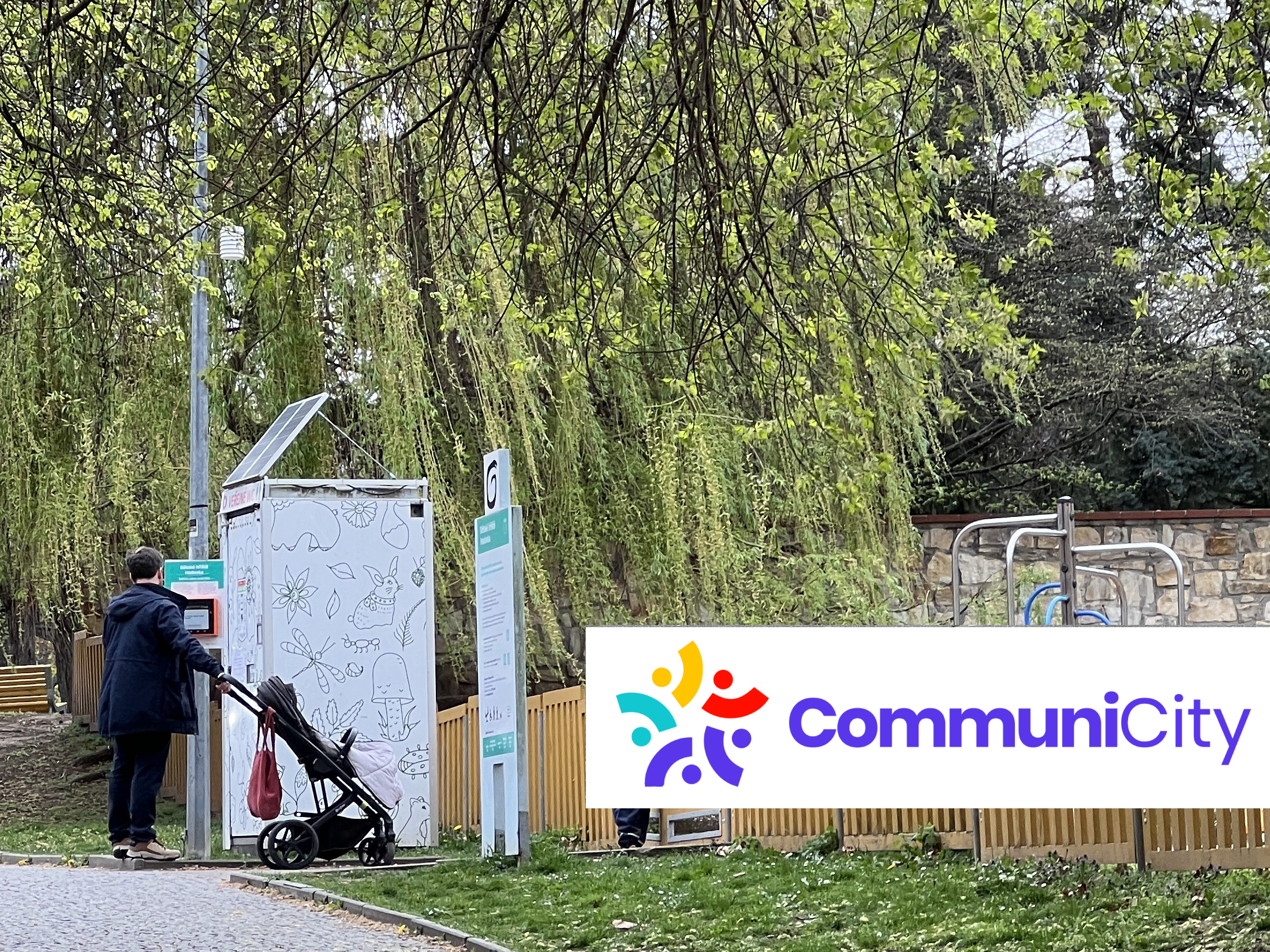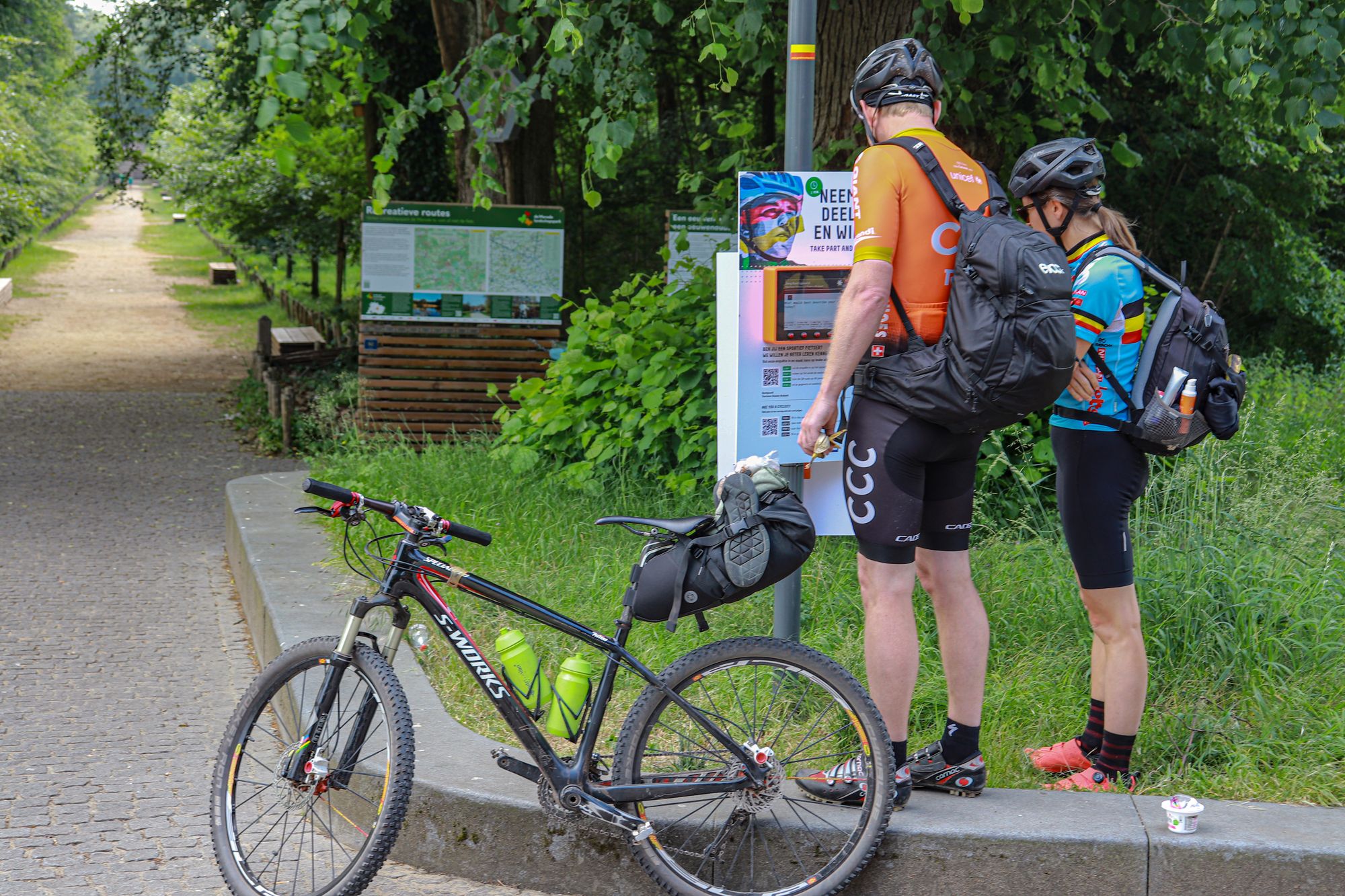Future of Johan Cruijff boulevard in Amsterdam
What were the objectives of this case study?
The Johan Cruijff Boulevard is situated next to famous football arena in Zuidoost Amsterdam, the home to the renowned Ajax team. In a large, multi-year project, the city of Amsterdam, its inhabitants, and various stakeholders are in the process of redeveloping the surrounding area called the “ArenApoort”.
With its famous football stadium, the nearby Ziggo Dome and AFAS Live concert halls and shopping centres, the area has become one of the busiest leisure locations in Amsterdam. In the new development plan, 5700 homes will be added to the area. Consequently, combining this huge influx of visitors with a pleasant living situation for neighbourhood inhabitants promises to be careful a balancing act.
As part of the European project CommuniCity, we collaborated with the city of Amsterdam’s Fieldlab ArenAgebied and the Johan Cruijff Arena to investigate what factors currently make the boulevard appealing to inhabitants and/or visitors, and what either group believes would further improve the space. Our goal is to gather urban planning insights for the Johan Cruyff boulevard.
Continues below the photo.
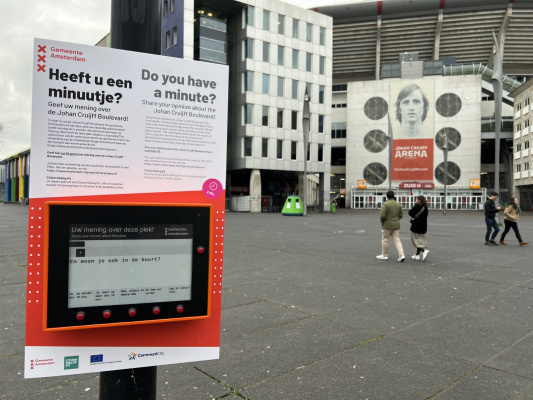
About CommuniCity
CommuniCity is a transformative citizen-centred project funded by the European Commission under the Horizon Europe Programme. CommuniCity and its consortium of partners works together with tech companies and providers, organisations, cities and their residents to develop innovative technical solutions to overcome digital, urban and social challenges.
The CommuniCity project launches three rounds of Open Calls that provide grants for up to 100 innovative pilot proposals. This project is one of the selected submissions for the Second Round.
For more information, visit: https://communicity-project.eu/
How was the deployment carried out?
The deployment took place over the course of 5 weeks. Using 2 Citizen Dialog Kit devices, we engaged over 370 passers-by who completed a total of 190 surveys.
Engagement peaks correlated with busy events in the area, such as a two-day concert (Niall Horan + Tommy Lefroy) and a sports event (Cruyff Legacy 14K).
Continues with insights below the photos.
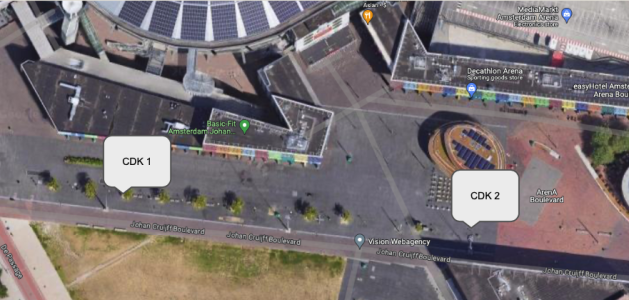

What were the insights from the deployment?
In total, we engaged more than 370 participants during this deployment. A considerable number (190) also completed the entire survey (8-9 questions). Most participants were between 19 and 30 years old (43%), or between 31 and 60 (36%). About half the participants traveled from outside Amsterdam (55%), and mainly for events (49%).
Meaningful insights included:
- As a place of leisure and going out, bars and restaurants are by far the main aspects of the area that participants enjoy (22%).
- In terms of changes to the area, interventions that increase cosiness (40%) and more greenery (31%) are most popular.
- In particular, outdoor bar seating and music (45% and 31%) are popular choices to increase cosiness, while trees score well for more greenery (44%). Mini soccer goals rank highest to increase sports and play space (50%).
- Most participants consider the area to be safe and pleasant.
Continues with reflections below the photo.
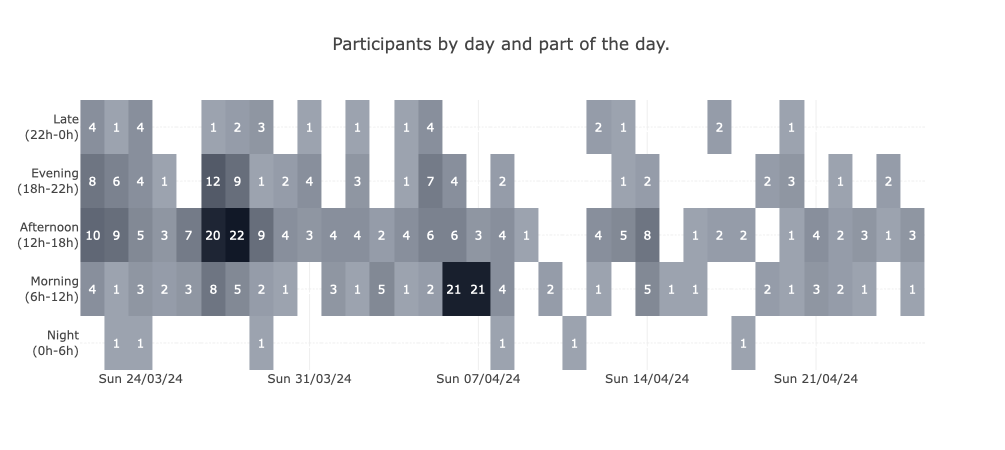

Reflections
This was certainly one of the biggest outdoor spaces in which Citizen Dialog Kit devices have been deployed. On this wide and long boulevard, surrounded by façade-scale large advertising, the survey devices could benefit from a larger poster design to compete for the attention of passers-by.
During on-site observations, we noticed how multiple passers-by were only convinced to stop and participate after noticing a second device on their walking path. This confirmed to us again the concept of a “landing zone”-effect for public interventions: the time it takes for a walking person to decided whether to stop or continue walking. Noticing the devices earlier, or seeing multiple devices essentially extends this “landing zone”-effect and creates multiple opportunities to stop and engage.
Partners
- Municipality: City of Amsterdam
- Funding: CommuniCity (Funded by the European Union)






